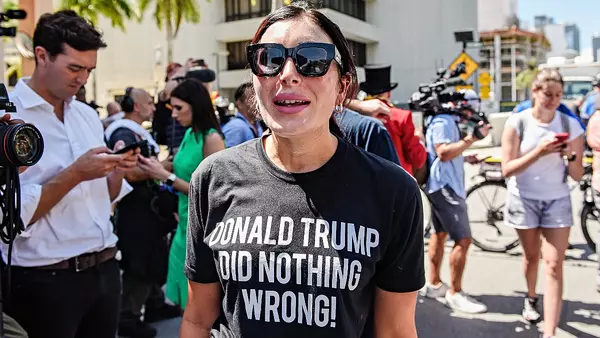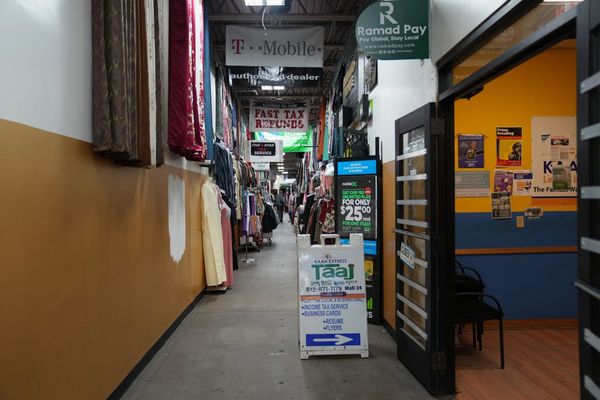
Lando Norris's words in the press conference ahead of the British Grand Prix, where he performed a u-turn on his condemnation of Max Verstappen's behaviour in Austria, have drawn much attention - and rightly so.
While it extinguished any chance of a rivalry that usually sparks discussions in pubs or lights up message boards on websites and news channels across the world, it has also provided an insight in modern Formula 1, where it is all so friendly.
A case in point is Verstappen's comments in the Red Bull motorhome ahead of the race at Silverstone when he was asked about Norris's post-race remarks.
In the fall-out from his short-lived spat with Norris, Verstappen said the only thing he was interested in was preserving his friendship with the McLaren driver. "The only thing that I care about is just my relationship with Lando," he said.
I'm sorry, what? Is this the same F1 world champion, who comes with a reputation for hard racing, whose steely determination and bloody-mindedness are matched by his brilliance behind the wheel? The same one who battled for the title in 2021. What's happened to him? Has he gone soft?
Maybe I am being a little facetious, but the modern era of F1 has seen a close-knit bond formed between a number of drivers, which on one hand is refreshing but on the other, too cosy.
Of course, friendships between drivers are nothing new in Formula 1. In the late 1950s, Mike Hawthorn and Peter Collins formed an allegiance at Ferrari. In the 1960s it was Graham Hill and Jackie Stewart who bonded after Jim Clark's death in 1968. And Mario Andretti and Ronnie Peterson became close when they raced together at Lotus in 1978. In more recent years, we have seen Sebastian Vettel and Kimi Raikkonen being pals, although it would be a push to call that relationship insurmountable.

However, it is clear that within this current generation, there are a greater number of genuine friendships that extend beyond the race tracks. We have seen the bromance between Norris and Carlos Sainz when they were with McLaren and that is frequently played out across social media and the golf course. Indeed Norris seems to be at the heart of the friendships that link George Russell, Alex Albon and Verstappen.
So, what has caused this shift that means we are now talking about friendships rather than rivalries? Perhaps it is Formula 1 acting as a microcosm of society as a whole, with a general attitude of preserving harmony within the working environment.
Outside in the real world - and not on social media - the post-COVID, Liberty-run series is largely enjoying a less-toxic environment as teams, drivers and team principals enjoy the spoils of the global boom in F1. The cost cap and significant increase in revenues have taken away the financial pressure, which in the past could have caused tensions between teams and drivers.
The dominance of Verstappen and Red Bull too has also conspired to making it a friendlier grid. Given that chances of fighting at the sharp end have been few and far between, relationships can be formed in the absence of genuine rivalries. It was only once Norris was drawn into regular battles for wins with Verstappen that it put a strain on their relationship.
Then there is the media landscape. During the 1980s, 1990s, 2000s and even the 2010s, there was an undoubted patriotic media bias driven by publications that chose to rally behind the drivers of their nationality.
This in turn created rivalries and fed into a narrative to cause inevitable tensions. The press room is now a very different environment, with fewer personalities and less partisan. For instance, ahead of this weekend's race, only two journalists from UK national media outlets asked the three British drivers a question in the press conference. In the past that would have seen a much-greater participation from the Fleet Street contingent.
Another element could be the volume of races on the calendar. With 24 races, the drivers are forced together much more frequently than they were in the past. The majority also live in Monaco, which again was not uncommon before, but they now frequently choose to travel together and consequently socialise with each other as a result, bringing them closer together.

The final element is Norris himself. He is an incredibly likeable character and has appealed to different generations of fans thanks to his sense of humour. That is also likely to work in the same way with his peers, in that he is easy to get on with.
He could be the link for a number of drivers to buddy up in a refreshing break from the past, when drivers were more insular in their existence.
Whatever the cause, there has been an undoubted shift, which is positive and for the meantime, Norris et al are back in harmony and friends again.
However, it would be naive to think that it can all remain in place once they are fighting for wins and championships. As Norris, Russell and Verstappen converge on track at the front, it is likely to prove that there is simply no room in F1 for friendships.







